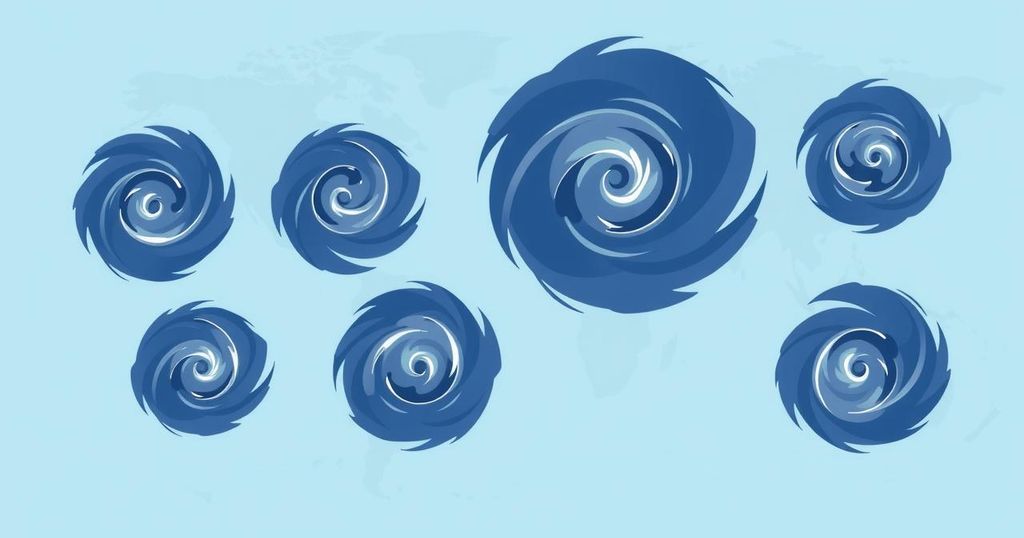Simultaneous Cyclone Activity in the Southern Hemisphere: Six Cyclones Unleashed
On Tuesday, six cyclones were active simultaneously in the southern hemisphere, primarily in the south-west Pacific. Severe Tropical Cyclone Alfred intensified to category 4, while Rae and Seru caused damage in Fiji. Cyclone Bianca avoided landfall, and two other storms, Garance and Honde, formed near Madagascar, illustrating the rarity but occurrence of simultaneous named storms in these ocean basins.
On Tuesday, an unprecedented meteorological occurrence took place as six named tropical cyclones were active concurrently in the southern hemisphere, with several existing in close proximity. Three of these storms developed in the south-west Pacific, including Severe Tropical Cyclone Alfred, which originated on 20 February in the Coral Sea, northeast of Australia. By Thursday, Alfred had intensified to a category-4 hurricane, with sustained winds reaching 105 mph (170 km/h) and gusts up to 140 mph.
Cyclone Alfred is progressing south, moving parallel to the Queensland coast, prompting warnings for strong winds and turbulent seas. Although it is not anticipated to make landfall, the Australian Bureau of Meteorology continues to observe the system as its proximity to the coast remains uncertain.
In the same region, two other short-lived storms, Rae and Seru, developed. Tropical Cyclone Rae formed on 22 February just north of Fiji, subsequently moving south across the island. Cyclone Seru emerged on 24 February over the southernmost Solomon Islands, moving southward and passing near Vanuatu and New Caledonia. Rae inflicted significant damage on various Fijian islands due to excessive rainfall, notable gusts of around 100 mph, and towering waves.
Additionally, Severe Tropical Cyclone Bianca, active from 18 to 27 February in the Timor Sea to the northwest of Australia, achieved a peak intensity equivalent to a category 3 hurricane. This cyclone navigated west before shifting south, ultimately avoiding landfall around the continent.
In the south-west Indian Ocean, two more cyclones have formed surrounding Madagascar. Intense Tropical Cyclone Garance, which has attained category 3 intensity, developed to the northeast of Madagascar and is projected to impact the French island of Réunion on Friday, bringing 120 mph gusts and the possibility of substantial rainfall reaching 600 mm. Meanwhile, Severe Tropical Storm Honde, classified as a category 1, formed in the Mozambique Channel, moving southeast and skirting the southern tip of Madagascar.
Although the existence of multiple named storms occurring concurrently is infrequent, it is not entirely unusual. A rare instance involves such storms occurring within a single ocean basin. The Pacific Ocean documented six simultaneous named storms only once, in August 1974, while the Atlantic’s record stands at five, established in September 1971.
The occurrence of six simultaneous cyclones in the southern hemisphere is a remarkable meteorological event. Notable cyclones, including Alfred, Rae, Seru, Bianca, Garance, and Honde, are causing varying degrees of impact across the Pacific and Indian Oceans. While the presence of multiple storms concurrently is rare, it underscores the volatility and complexity of tropical cyclone activity in these regions.
Original Source: www.theguardian.com




Post Comment